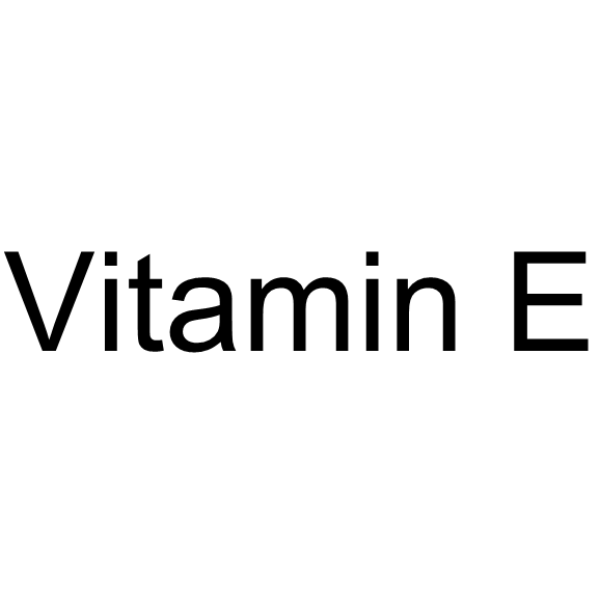| Description |
Vitamin E, an essential nutrient for humans and animals reproduction, is a lipid-soluble antioxidant. Vitamin E can protect lipids against oxidative stress, and rescue the glutathione (GSH) depletion-induced hypersensitivity of cells to H2O2. Supplementation with Vitamin E increases its levels in cerebrospinal fluid and plasma, as well as reduces Aβ levels, thus beneficially influences oxidative stress in Alzheimer's disease. Vitamin E also has anti-aging effects[1][2][3][4].
|
| Related Catalog |
|
| Target |
ROS, Amyloid-β[1][4]
|
| In Vitro |
Vitamin E (5-80 μM) rescues the GSH depletion-induced hypersensitivity of rabbit lens epithelial cells (RLEC) to H2O2[2].
|
| In Vivo |
Vitamin E (2 I.U./g diet; PO; daily, for 8 months) suppresses brain lipid peroxidation and significantly reduces Aβ levels and amyloid plaque deposition[4]. Animal Model: Tg2576 mice (transgenic model of Alzheimer's disease)[4] Dosage: 2 I.U./g diet Administration: PO; daily, for 8 months (from 5 month-old to 13 month-old) Result: Suppressed brain lipid peroxidation and significantly reduces Aβ levels and amyloid plaque deposition when it is administered early during the evolution of their disease phenotype.
|
| References |
[1]. Traber MG, et al. Vitamin E, antioxidant and nothing more. Free Radic Biol Med. 2007 Jul 1;43(1):4-15. [2]. Shang F, et al. Vitamin C and vitamin E restore the resistance of GSH-depleted lens cells to H2O2. Free Radic Biol Med. 2003 Mar 1;34(5):521-30. [3]. Kontush K, et al. Vitamin E in neurodegenerative disorders: Alzheimer's disease. Ann N Y Acad Sci. 2004 Dec;1031:249-62. [4]. Sung S, et al. Early vitamin E supplementation in young but not aged mice reduces Abeta levels and amyloid deposition in a transgenic model of Alzheimer's disease. FASEB J. 2004 Feb;18(2):323-5.
|
